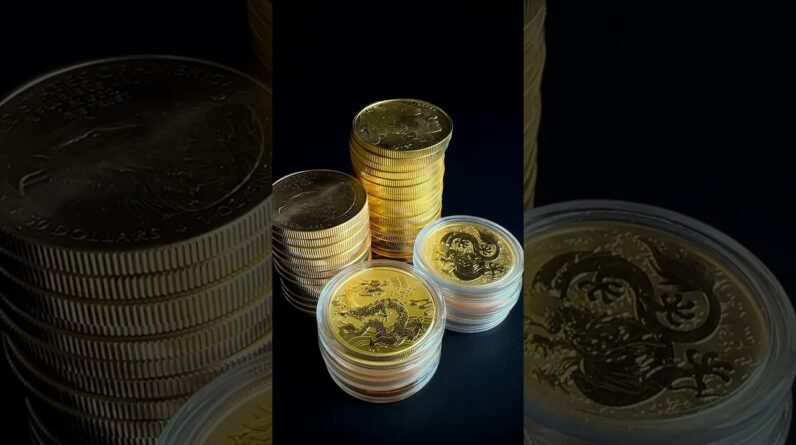The Santa Claus Rally for gold is a phenomenon that captures the attention of investors and enthusiasts alike. It refers to the seasonal increase in the price of gold towards the end of the year, typically during the month of December. Many wonder what sparks this rally and whether it can be expected to occur consistently. In this blog post, the focus will be on unraveling the meaning behind the Santa Claus Rally for gold and exploring the factors that contribute to its occurrence. By analyzing historical trends and market conditions, we aim to provide insights into whether we can anticipate this festive surge in the future. So, read on to discover more about this captivating phenomenon and the potential implications it holds for the world of gold investments.
Introduction:
In the realm of investment and finance, the concept of a “Santa Claus Rally” has often been associated with the stock market, but have you ever wondered if it could extend to other sectors as well? In this article, we will explore the possibility of a Santa Claus Rally for gold and delve into what it means for investors. Join us as we uncover the potential benefits and risks of this phenomenon, and whether we can expect it to materialize.
Santa Claus Rally for Gold: What Does It Mean and Can We Expect It?
With the recent economic landscape displaying fluctuations and uncertainties, understanding the potential impacts on gold prices becomes vital for investors. Let’s take a closer look at the factors that may influence a Santa Claus Rally for gold and what it could mean for those interested in investing.
-
Core PCE numbers show a slight increase of 0.1% for the month and a year-over-year increase of 3.2%.
The Core Personal Consumption Expenditures (PCE) price index, which is closely monitored by the Federal Reserve, provides insights into inflation trends in the economy. A slight increase in these numbers suggests that inflation may be on the rise, potentially affecting the price of gold. -
The trend suggests inflation moving toward the 2% target set by the Fed.
The Federal Reserve has set a target of 2% for inflation. If the Core PCE numbers show a consistent upward trend, there is a possibility that inflation will move closer to the desired target. This, in turn, could impact the price of gold, as it is often viewed as a hedge against inflation. -
The Fed has changed gears on policy decisions, announcing rate decreases.
In response to economic conditions, the Federal Reserve has made significant policy changes, including announcing rate decreases. These decisions can influence the value of the U.S. dollar, which, in turn, can impact the price of gold. Investors often turn to gold as a safe haven when the value of the dollar weakens. -
The price of gold is already increasing, potentially benefiting from the inflation trend.
Even before the potential Santa Claus Rally, the price of gold has been showing signs of an increase. This can be attributed to various factors, such as geopolitical tensions and market uncertainties. The inflation trend, if it continues, can further boost the price of gold, making it an attractive investment option for those seeking to hedge their portfolios. -
People are discovering easier ways to participate in market swings rather than buying and selling physical gold.
Traditionally, investors interested in gold have relied on buying and selling physical gold. However, in recent years, alternative investment methods have emerged. These include exchange-traded funds (ETFs), gold futures, and gold mining stocks, which provide investors with easier access to gold price movements without the need for physical ownership. -
Reasons for owning physical gold include limiting third-party risk and the experience of handling gold firsthand.
While alternative investment methods offer convenience, there are still compelling reasons to own physical gold. Owning physical gold limits third-party risk, as investors have direct control over their assets. Additionally, the tangible nature of physical gold provides a unique experience for those who enjoy handling and possessing this precious metal. -
Physical gold is not ideal for trading, but it can provide a sense of reward and act as a good way to save.
It’s essential to distinguish between trading and investing when considering physical gold. Physical gold may not be the most efficient option for short-term trading due to associated costs, such as storage and insurance. However, it can act as a long-term savings instrument, providing a sense of reward and stability to investors who value its intrinsic properties. -
There are alternative ways to invest in gold, such as buying shares of metal equities or gold producers.
For investors seeking exposure to gold without physical ownership, shares of metal equities or gold producers can be an attractive option. Investing in these companies allows individuals to benefit from potential gold price movements while diversifying their portfolio across multiple holdings. However, it’s essential to conduct thorough research and due diligence before making any investment decisions.
In conclusion, the possibility of a Santa Claus Rally for gold holds intrigue for investors looking to capitalize on potential price movements. Factors such as inflation trends, Federal Reserve policy decisions, and geopolitical uncertainties can contribute to the rise in gold prices. While physical gold ownership offers unique advantages, alternative investment methods provide flexibility and ease of participation. As with any investment, careful analysis, and consideration of one’s financial goals are crucial before embarking on a gold investment journey.
FAQs:
-
What exactly is a Santa Claus Rally for gold?
A Santa Claus Rally for gold refers to a potential increase in gold prices during the year-end holiday season, much like the rally experienced by the stock market. It is associated with factors such as inflation trends and market uncertainties. -
How does inflation affect the price of gold?
Gold is often seen as a hedge against inflation. When inflation increases, the purchasing power of fiat currency decreases. Investors turn to gold as a store of value to protect their assets from eroding due to inflation. -
Are there any risks associated with investing in physical gold?
While physical gold offers advantages such as direct ownership and limited third-party risk, it also poses risks such as storage and insurance costs. Additionally, it may not provide the same liquidity as other investment options. -
Can investing in gold be considered a long-term savings strategy?
Investing in gold, especially physical gold, can act as a long-term savings strategy. It offers stability and can provide a sense of reward to investors. However, careful consideration of one’s financial goals and risk tolerance is essential before adopting gold as a savings instrument. -
What alternative investment methods are available for individuals interested in gold?
Investors can consider alternative methods such as gold ETFs, gold futures, or investing in shares of metal equities or gold producers. These options allow individuals to benefit from gold price movements without the need for physical ownership. Thorough research and due diligence are necessary before investing in these alternatives.










